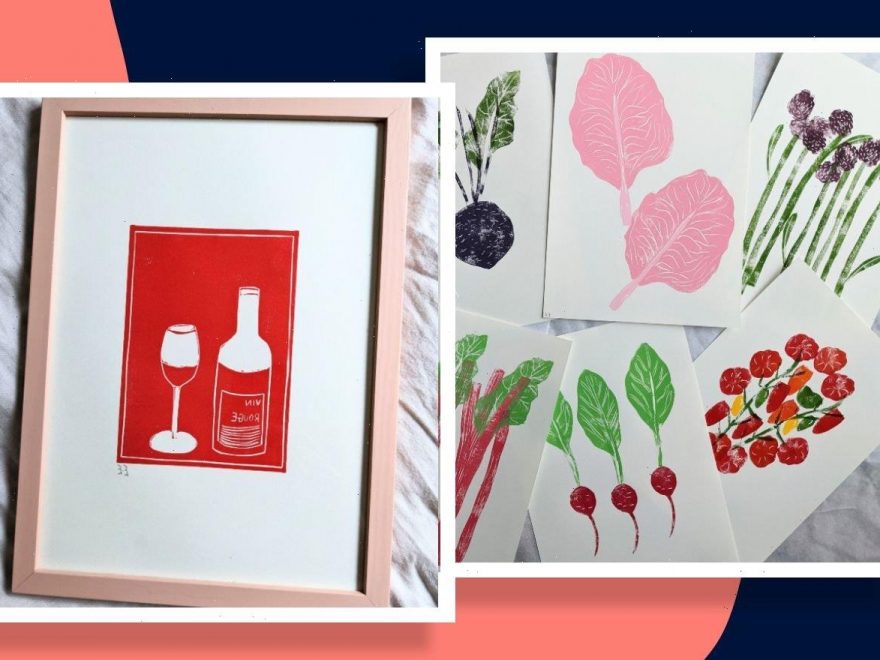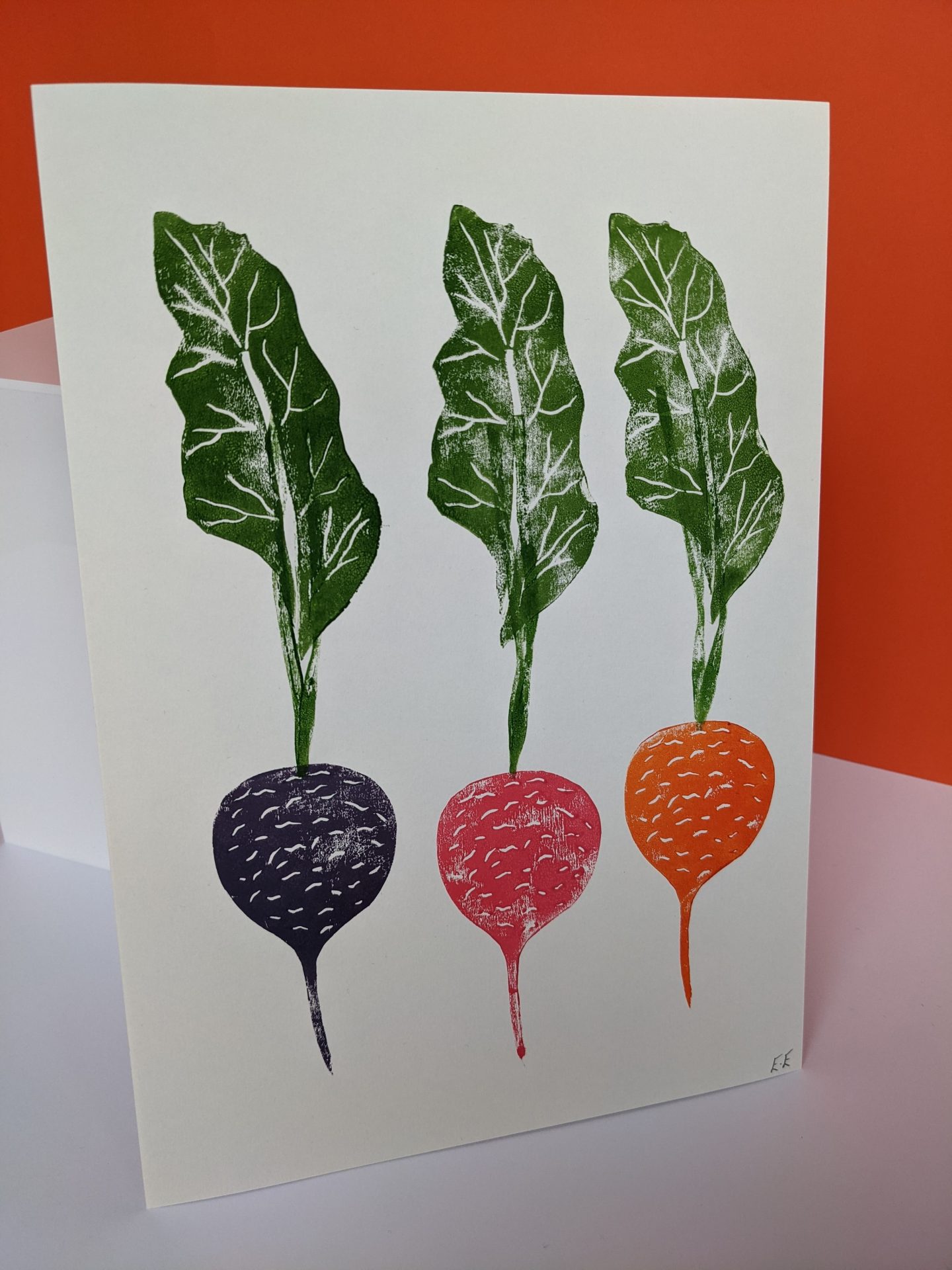Lino printing has soared in popularity since the first lockdown in the UK. Learn how to perfect the art form with this expert tutorial and tips.
Creating art is an incredible way to spend your time. It’s a creative outlet that can help you destress and it also leaves you with unique ways to decorate your home and gifts to give to friends and family. It can be intimidating though, especially if you’re staring at a blank canvas with no idea where to start.
A form of art that is growing in popularity, particularly for beginners, is lino printing. It’s a printmaking technique in which you cut out your design onto a piece of linoleum (traditionally used as floor covering) and print it onto a piece of paper or canvas of your choice.
The options are endless with lino, as you can get as detailed or keep things as simple as you would like. It’s rewarding too, as you’ll likely make a lot of progress in a short period of time and will immediately be able to see improvements in your art.
“I was looking for something creative to do during the first lockdown and I was drawn to lino printing,” says Ellie Edwards, whose prints are now stocked by Liberty. “Lino is really affordable and you don’t need many tools to get started. Plus, it doesn’t require much space so it’s a great activity to do at home,” she says.
Ellie has significantly improved her lino printing skills since she started out just over a year ago. In fact, selling her prints now makes up a big part of her income. Here, she shares her tutorial for lino printing at home as well as some tips for creating unique prints.
What you’ll need to create a lino print
- One block of lino (Ellie recommends soft carved lino for beginners)
- Carving tools (try a beginner’s set like this one)
- Ink (Ellie recommends water-based ink)
- Lino roller
- Paper (of your choice)
- Wooden spoon or a baren
How to create your own lino print
- Choose a design. Ellie recommends something using simple shapes, like a pear, a flower or a building.
- Draw your design onto tracing paper
- Transfer the design from the tracing paper onto the lino (this will make sure it’s the right way round when you print it onto paper)
- Carve round your design using your tools. Consider the negative space – the parts that you cut out will be white when you print them and the parts that you leave will be in the colour of your ink.
- Add ink using a paint roller. Figuring out how much ink you need is a process of trial and error, so it’s best to try out your design on a scrap piece of paper to start off until you are happy with the effect of the ink.
- Place a piece of scrap paper on a flat surface. Add your lino block on top of this with the design facing up. Place another piece of paper (the one you want to use for your print) on top of your lino and hold it down with a wooden spoon or a baren.
Ellie’s expert tips for creating incredible lino prints
Tailor it towards what you love
The rule with lino is that so long as you can draw it, you can lino print it. “That’s the great thing about lino is that you can really create anything you want,” Ellie says.
Ellie has always loved (and written about) food so she creates designs centred around food and drink but if you’re interested in fashion or beauty or nature, for example, you can easily create lino prints based on these things.
As a beginner, Ellie suggests that you avoid drawing shapes that are curved because they can be more difficult to carve into the lino. “I’d also suggest that you don’t try to use text to start off with because it can be confusing to draw it backwards,” she adds.
Practise using the carving tools
Getting to grips with the carving tools is the most difficult thing about lino, according to Ellie. “Different tools create totally different shapes so it’s good to try and get used to them,” she says.
“Be careful how much pressure you apply to the lino,” she adds, explaining that the lino can be manipulated really easily so it’s important that you are careful when carving.
Experiment with your inks
Ellie recommends buying a set of inks in primary colours to start off with, but that doesn’t necessarily limit you to only creating designs made up of these colours. “Inks work in the same way as paints so you can mix them to create your own colour palettes,” Ellie says.
“Don’t be afraid to experiment and have fun with your designs,” she adds.
You can read more arts and crafts content at Stylist.co.uk.
Ellie Edwards, print maker
Ellie’s prints are stocked by Liberty London. Ellie is a Walthamstow-based print maker. Inspired by her background in food writing, her lino prints focus on pastries she has picked up from her local bakery, cocktails she had sipped, dishes she has eaten at her favourite restaurants and seasonal produce from local markets.
Images: Ellie Edwards
Source: Read Full Article

